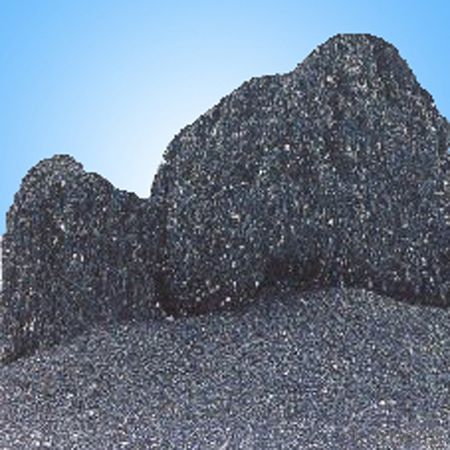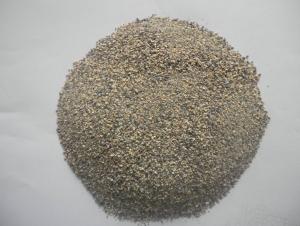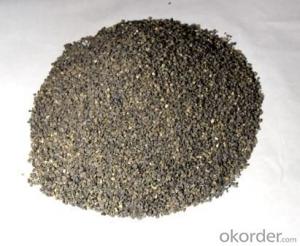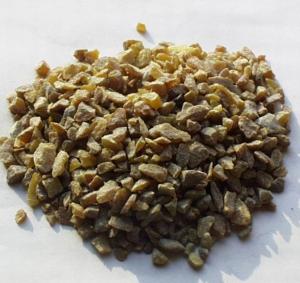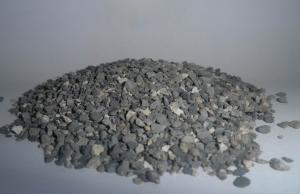Raw Materials for Refractory - Silicon Carbide for Abrasives and Refractory
- Loading Port:
- China main port
- Payment Terms:
- TT OR LC
- Min Order Qty:
- 25 m.t.
- Supply Capability:
- 2000 m.t./month
OKorder Service Pledge
OKorder Financial Service
You Might Also Like
Silicon Carbide For Abrasives and Refractory
1.Green, crystal structure, high hardness and strong cutting ability, stable chemical characteristics, good thermal conductivity.
2.Among abrasives, silicon carbide’s hardness is higher than corundum, and ranked below diamond, CBN and boron carbide.
3.Density generally viewed is 3.20−3.25g/ mm3 , natural bulk density is 1.2−1.6g/ mm3 , specific gravity is 3.20˜3.25g/ mm3.
Raw material are petroleum coke and quality silicon sand, appended with salt, then smelted in electric arc furnace. Mechanical strength is higher than corundum.

Particle size comparison of commonly used abrasive:
Particle size distribution (micron) | Chemical composition | Physical composition | |||||||
Size | D3 | D50 | D94 | SiC ≥(%) | Fe2O3 ≤(%) | F•C ≤(%) | PH Value | Bulk Density | Magnetic Materials≤(%) |
GC#800 | ≤20.0 | 14.0±1.0 | ≥9.0 | 99.00 | 0.20 | 0.2 | 6--8 | 1.18 | 0.008 |
GC#1000 | ≤18.3 | 11.5±1.0 | ≥7.0 | 98.50 | 0.20 | 0.2 | 6--8 | 1.15 | 0.008 |
GC#1200 | ≤17.5 | 9.5±0.8 | ≥5.5 | 98.50 | 0.20 | 0.2 | 6--8 | 1.13 | 0.005 |
GC#1500 | ≤14.5 | 8.0±0.6 | ≥4.5 | 98.00 | 0.20 | 0.2 | 6--8 | 1.12 | 0.005 |
GC#1800 | ≤13.5 | 7.0±0.6 | ≥4.2 | 98.00 | 0.20 | 0.2 | 6--8 | 1.05 | 0.005 |
GC#2000 | ≤13.0 | 6.7±0.6 | ≥4.0 | 98.00 | 0.20 | 0.2 | 6--8 | 1.00 | 0.005 |
Main applications:
solar and semiconductor wafer wire sawing; crystal and ferrite polishing; ceramic and special steel precision polishing; bonded and coated abrasive tools; cutting and polishing; non−ferrous metal lapping such as glass, stone, agate and high−grade jewelry; high−grade refractory materials , engineering ceramic, heating elements and thermal elements.
For wire-sawing of solar and semi-conductor
Usage:
Green silicon carbide is used for wire−sawing of monocrystal silicon, polocrystalline silicon, potassium arsenide, quartz crystal etc, it is the engineering processing material in solar photovoltaic industry, semi−conductor industry and piezoelectric crystal industry.
Feature:
1.high purity and large crystal silicon carbide ingots ensure the excellent cutting capability and stable physical condition.
2.Grains are isometric with sharp edge, which ensure the even self-sharpening capability as cutting material and minimum TTV of the products been cutted.
3.Particle size distribution is narrow and even.
4.High heat−resisting and refractoriness under load guarantee the small wire expansion in processing, suitable to all kinds of wire saw machine.
5.Grain surface possessed specially, micro−powder with clean surface and easily fit cutting fluid, such as polyethyleneglycol and so on.
Company Information

Q1. Will the FREE SAMPLES be provided for buyers?
- YES. We will provided FREE SAMPLE about 1kg
Q2. How about the express fee?
- Our company’s policy is the buyer pay for express fee.
Q3. Is there QUALITY REPORT for the products?
- YES. We provide quality report of our company or CIQ,SGS according to client‘s requirement
- Q: What is streaming fireproof material?
- Streaming fireproof material is castable refractory that can flow and degas without virbration, which is suitable for thin-wall or places that cannot be molded by vibration because of complex shapes. Well, appropriate amount of water is necessary for it. Its characteristic goes that it can be cast into various shapes of construction body without virbration and it will not reduce or not significantly reduce the performance of castable at the same time.
- Q: What's the fire endurance of fire windows?
- That is fire resistance rating, fire-resistant time in the case of fire! It can be basically classified into the following levels and the fire endurance of the fire window is as follows as well: A class fire window: no less than 1.2h; B class fire window: no less than 0.9h; C class fire window: no less than 0.6h. This is in accordance with the latest specification of gb16809-2008 fire windows.
- Q: Who knows what kind of material the fire-proof plate use, and is it good?
- Personally speaking, fireproof clapboard is very good. It is also known as fire-proof plate or fire retardant board. Made by the pressing of a variety of incombustible?materials after scientific deployment, it is good in fire retardation and can be fire resistant for over 3 hours. It is also non-toxic and non-detonating with high mechanical strength, water and oil resistance, and good chemical corrosion resistance.
- Q: How long is the fire resistance time of the AAAfire resistance rolling shutter door?
- How long is the fire resistance time of the AAA fire resistance rolling shutter door?
- Q: How long is the fire endurance of the rock wool board?
- The rock wool board takes the basalt as raw material and is processed into artificial inorganic fiber through high temperature melting, which is light in weight, non-combustible, heat absorptive, small in thermal conductivity. The initial development in construction is a common type of application used for industrial buildings, which should be consistent with the requirements of "building insulation application categories and basic requirements" . In June 1981 the pre-launch succeeds. The rock wool board is a new type of insulation, burning compartment and sound-absorbing material. Generally the fire resistance of the rock wool board is 140-180 degree within two hours, It is best not to exceed this safe period, in order to avoid security risks.
- Q: What are the chemical composition of refractory cement?
- Calcium aluminate prepared by calcining as the main component. Aluminate cement takes bauxite and limestone as raw materials, alumina content of about 50% as the clinker. And it is a hydraulic cementing material made by grinding. Refractory cement is also known as aluminate cement.
- Q: how to classify Insulating Refractory ?
- We are glad to answer your questions! This one is professional. My advice is to go through relevant webs for reference.
- Q: What level is the rock wool board fireproofing material ?
- The fire rating classification is a provision for all insulation materials, rather than to separately divide rock wool. Determine the value of the material fire rating according to the relevant test items of 8624. As the rock wool is made from basalt fusion, so it is the level A non-combustible material. And those we usually see are the mineral?cotton and glass wool, with its refractory temperature lower than the rock wool's. Rock wool board is now mainly used in wall insulation, which is a level A fire insulation material.
- Q: what needs to be noted when choosing and using blast furnace fireproof materials?
- it depends on the size of the blast furnace. below 200 cubic meters alumina bricks and carbon brickcan be used. 200 cubic meters and above are currently integrated bottom, not the same as the size of the cubic level, varying in the use of refactory. I hope my answers above are helpful to you and your ideal anwers.
Send your message to us
Raw Materials for Refractory - Silicon Carbide for Abrasives and Refractory
- Loading Port:
- China main port
- Payment Terms:
- TT OR LC
- Min Order Qty:
- 25 m.t.
- Supply Capability:
- 2000 m.t./month
OKorder Service Pledge
OKorder Financial Service
Similar products
Hot products
Hot Searches
Related keywords



